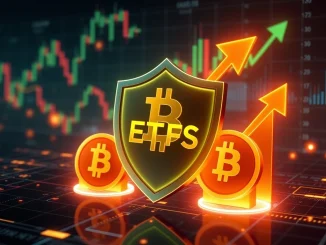
Attention, crypto enthusiasts and Chainlink (LINK) holders! Significant movement has been detected on the blockchain involving a large holder of LINK tokens. This kind of activity often catches the eye of traders and analysts alike, as it can sometimes precede major market moves. Understanding these large transactions, especially involving a prominent asset like Chainlink, is key to navigating the volatile crypto landscape.
What the Latest On-Chain Data Reveals
According to insights shared by the keen-eyed on-chain analyst @ai_9684xtpa on X, a notable transaction pattern has emerged. Their analysis of recent on-chain data indicates that three distinct cryptocurrency addresses have collectively moved a substantial amount of Chainlink (LINK) tokens. These addresses appear to be linked, suggesting they belong to the same entity – likely a single wealthy investor or institution, often referred to as a ‘whale’ in the crypto community.
Major LINK Whale Activity on Binance
The core of this development is the destination of these tokens: the Binance cryptocurrency exchange. The three addresses collectively deposited approximately $3.75 million worth of Chainlink (LINK) onto Binance just a couple of hours prior to the analyst’s report. A large deposit to an exchange like Binance is often interpreted as a precursor to selling activity, as it makes the tokens readily available for trading on the platform.
Tracking the Profit Potential of This Crypto Whale
The on-chain data provides further context on the profitability of this potential trade. The addresses in question reportedly accumulated their LINK holdings over a period stretching from June to October 2024. During this accumulation phase, their average entry price was around $13 per token. With the current price at the time of the deposit hovering around $15.86, a sale at this level would lock in a significant gain. Based on the estimated deposit value and the average acquisition cost, this crypto whale stands to realize an estimated profit of approximately $764,000 from this batch of tokens.
Why Do Whales Make Large Binance Deposits?
While a deposit to an exchange doesn’t *guarantee* a sale, it’s the most common reason for such a large movement from cold storage or private wallets. Whales might deposit funds for several reasons:
- To Sell: The most likely reason is to sell tokens, either partially or entirely, to realize profits or cut losses.
- To Trade: They might use the deposited LINK as collateral or capital for other trades on the exchange.
- To Provide Liquidity: Less common for spot markets, but possible depending on the exchange’s offerings.
- For Other Exchange Services: Participating in staking, lending, or other programs offered by the exchange.
Given the reported profit margin, a profit-taking motive seems highly probable in this instance.
Potential Impact on Chainlink Price
The deposit of $3.75 million worth of LINK to Binance could potentially add selling pressure to the market. While this amount is not colossal in the grand scheme of Chainlink’s total market cap and daily trading volume, large, concentrated sells from whales can sometimes influence short-term price action, especially if the market is already volatile. Traders often watch these whale movements closely using on-chain data tools to anticipate potential shifts in supply dynamics and the Chainlink price.
In Conclusion
The movement of $3.75 million in LINK from three associated addresses to Binance, as highlighted by on-chain analysis, is a noteworthy event for the Chainlink community. The addresses, likely controlled by a single whale, acquired these tokens at an average price of $13 and deposited them when the Chainlink price was near $15.86, setting the stage for a potential profit of over $764,000. While the deposit doesn’t confirm a sale, it significantly increases the likelihood, and market participants will be watching closely to see if this leads to increased selling pressure on LINK on Binance. This event underscores the value of monitoring on-chain data to gain insights into the potential intentions of large market participants.



